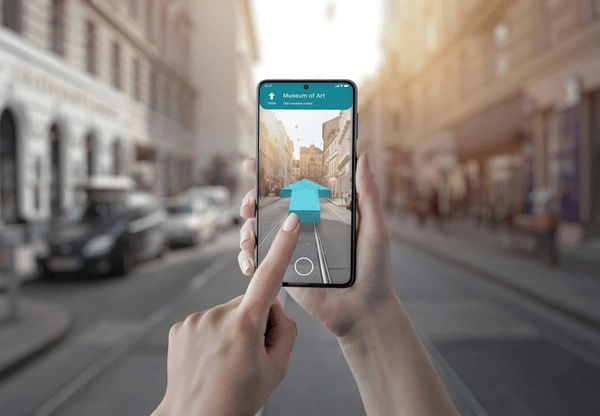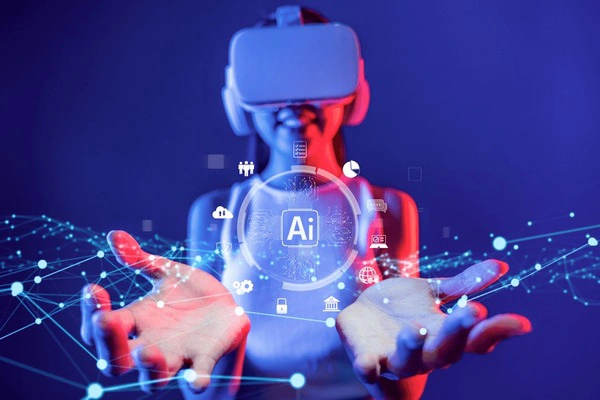
How Augmented Reality is Revolutionizing Art Experiences
Augmented reality is revolutionizing how we experience art by blending digital and physical worlds, creating interactive and immersive exhibitions. This technology enables artists to push creative boundaries and makes art more accessible to a broader audience. As AR becomes integral to art, it bridges the gap between artists and audiences, paving the way for a more inclusive and innovative future.
Sophie Reed
09/11/2024 - 7 months ago

A New Dimension of Art
Augmented reality (AR) is revolutionizing the art world, creating experiences that are both immersive and interactive. Unlike traditional exhibits, where viewers can only look at the artwork, AR allows them to engage with it in a more dynamic way. Using a smartphone or tablet, people can see digital elements layered over the real-world environment, transforming how we perceive art. This technology is opening up new possibilities for artists to express themselves and for audiences to experience art like never before.
The power of augmented reality lies in its ability to blend the digital and physical worlds seamlessly. For instance, when visiting a gallery, viewers can use their devices to unlock hidden layers of information about the art pieces. This could be anything from seeing a 3D model of a sculpture to witnessing an animated version of a painting. Such features make the art more engaging and educational, inviting viewers to explore and learn in ways that were not possible before.
Artists are embracing AR to push creative boundaries and tell stories in novel ways. Through immersive digital art, they can create entire worlds that change and evolve with the viewer's interaction. This not only captivates the audience but also allows for a deeper understanding and appreciation of the artwork. By merging technology with creativity, artists can offer unique experiences that challenge the conventional methods of art presentation.
Moreover, augmented reality in art exhibitions can make art more accessible to a broader audience. It can remove physical barriers and bring art to those who might not have easy access to museums or galleries. By simply downloading an app, people can experience world-class art from the comfort of their own home. This democratization of art encourages more people to engage with culture and creativity, regardless of their location or background.
Interactive Art Experiences
Interactive art experiences powered by AR are transforming how we interact with artwork and exhibitions. This technology allows viewers to become part of the art itself, blurring the lines between observer and participant. For instance, some exhibitions enable visitors to manipulate digital components of the artwork, altering its appearance or triggering different responses. This level of engagement creates a personal connection between the viewer and the art, making the experience memorable and unique.
One example is the use of AR in museums to enhance storytelling. By pointing a device at an exhibit, visitors can watch historical events unfold or hear stories about the artwork's creation straight from the artist. These interactive narratives can make history come alive, providing context and depth that traditional labels or audio guides cannot match. This approach enriches the educational value of museum visits, making learning more engaging.
AR technology also allows for collaborative art projects where multiple users can interact with and contribute to the same piece of art simultaneously. This fosters a sense of community and shared experience, as people from different backgrounds come together to create something new. Such projects can be particularly impactful in public spaces, encouraging social interaction and dialogue around art.
The integration of augmented reality in art is not just a fad; it's a glimpse into the future of how we will experience and appreciate art. As technology continues to evolve, it's likely that AR will become an integral part of the art world, offering endless possibilities for creativity and exploration. This exciting development invites everyone to be a part of the art journey, breaking down barriers and opening up new worlds of imagination.
Bridging the Gap Between Artists and Audiences
With AR, artists can reach audiences in ways that were unimaginable before. This technology serves as a bridge between creators and spectators, fostering a deeper connection through interactive and engaging experiences. For artists, AR provides a platform to showcase their work in innovative ways, expanding their reach beyond traditional physical spaces. This can lead to new opportunities and collaborations, as well as increased visibility in the art world.
Augmented reality also allows artists to receive immediate feedback from viewers, which can be invaluable for their creative process. By observing how audiences interact with their art, artists can gain insights into their preferences and reactions. This feedback loop can inspire artists to refine their work, experiment with new ideas, and tailor their creations to better resonate with their audience.
For audiences, AR offers a more personal and interactive experience. Instead of passively observing an artwork, viewers can engage with it, explore its different layers, and even become part of the narrative. This active participation makes the art experience more memorable and meaningful, fostering a greater appreciation for the artist's vision and message.
By leveraging augmented reality, the art world is moving towards a more inclusive and engaging future. This technology makes art accessible to a wider audience, transcending geographical and socioeconomic barriers. As more artists and institutions embrace AR, we can expect the art experience to become even richer and more diverse, paving the way for a new era of creativity and cultural exchange.
The Future of Art with AR
As AR technology continues to develop, the potential for its application in art is limitless. Future exhibitions could feature even more sophisticated interactions, allowing viewers to fully immerse themselves in the artwork. Imagine walking through a painting or interacting with characters from a sculpture, experiencing art in ways that were once the realm of science fiction. This evolution will continue to push the boundaries of what is possible in the art world.
The integration of AR in art also presents exciting opportunities for education and cultural preservation. By using AR, museums and galleries can offer virtual tours and experiences that bring history and culture to life for people around the globe. This can help preserve cultural heritage and make learning more engaging and accessible, ensuring that future generations remain connected to their past.
Moreover, AR can play a significant role in making art sustainable. By reducing the need for physical transportation and resources, AR can lower the environmental impact of exhibitions. Virtual and augmented exhibitions can reach a global audience without the carbon footprint associated with traditional art displays. This shift towards sustainability is an important consideration as the art world looks to the future.
In conclusion, augmented reality is not just transforming how we experience art today; it's shaping the future of the art world. By providing more immersive, interactive, and accessible experiences, AR is bridging the gap between artists and audiences and paving the way for a more inclusive and innovative art landscape. As we continue to explore the possibilities of this technology, we can look forward to a vibrant and dynamic future for art and culture.


















